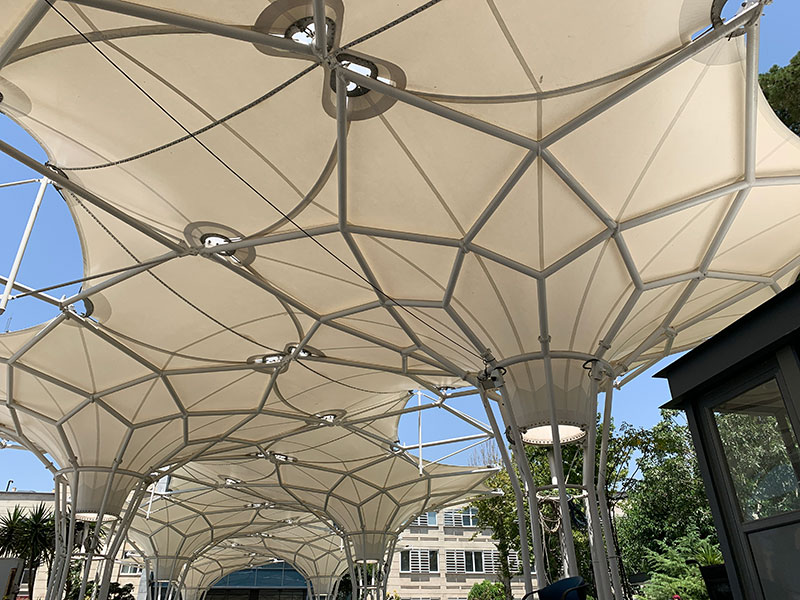The evolution of modern architecture has been significantly influenced by the introduction of tensile fabric structures. These innovative architectural forms represent a departure from traditional building materials and techniques, offering architects and designers new avenues for creative expression.
One prominent aspect of modern architecture in tension fabric structures is their aesthetic appeal. The fluid, organic shapes achievable with fabric membranes create visually dynamic spaces that complement contemporary urban landscapes or natural environments. These structures often serve as landmarks or focal points within their surroundings, drawing attention through their innovative design.
Moreover, the integration of advanced digital design tools and computational modeling has revolutionized the way architects approach the design and fabrication of tensile fabric structures. Parametric design techniques allow for precise control over form and performance, optimizing structural efficiency and material usage. This process enables architects to explore complex geometries and structural patterns that were previously impractical with conventional building materials.
Functionally, modern tension fabric structures offer versatility in use. They can be employed for various applications, including stadiums, exhibition spaces, pavilions, and canopies. The lightweight nature of fabric membranes facilitates large-span coverage without the need for extensive supporting columns, creating open, unobstructed spaces that enhance user experience and functionality.
Furthermore, these structures contribute to sustainable architecture practices. By utilizing lightweight materials and maximizing natural light penetration, tensile fabric structures reduce energy consumption and operational costs. Additionally, their modular construction and potential for reuse align with principles of environmental responsibility and resource efficiency.
In summary, modern architecture in tension fabric structures represents a convergence of aesthetic innovation, technological advancement, and sustainable design principles. These structures not only redefine spatial possibilities but also exemplify the potential of architecture to harmonize with its environment while pushing the boundaries of form and function.

